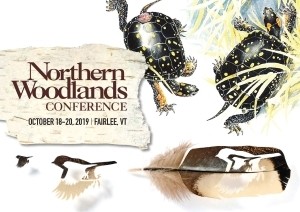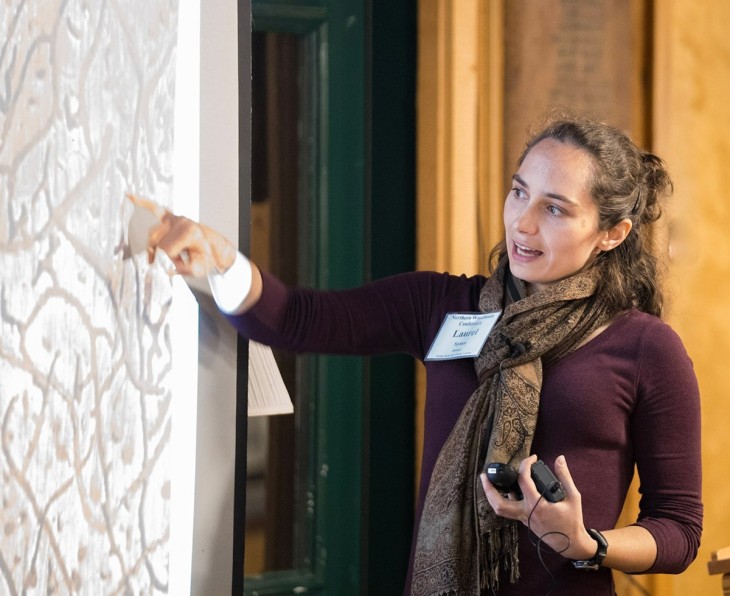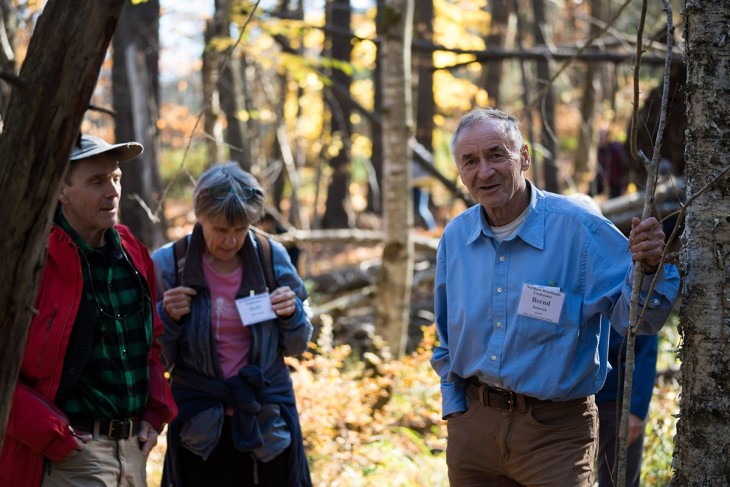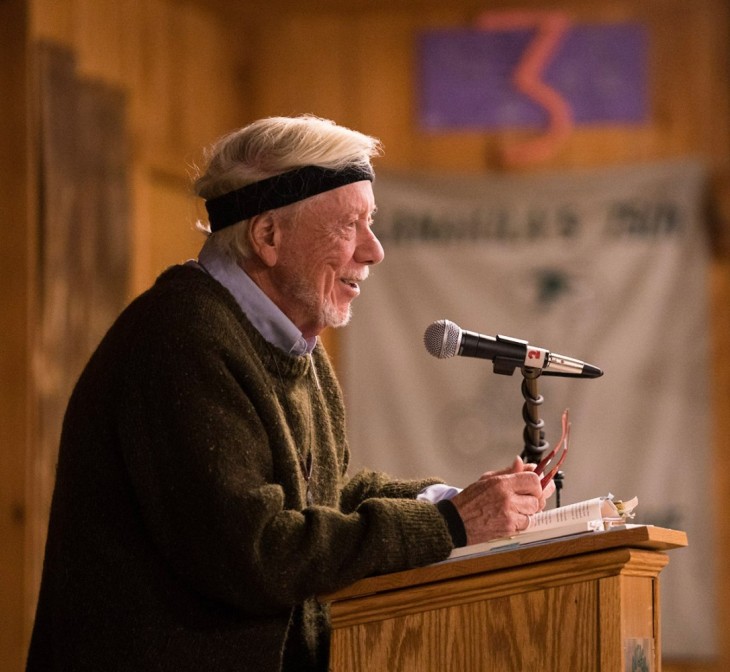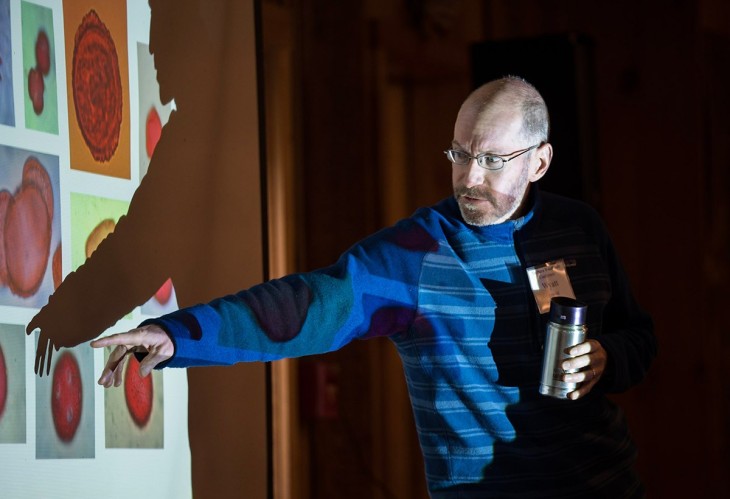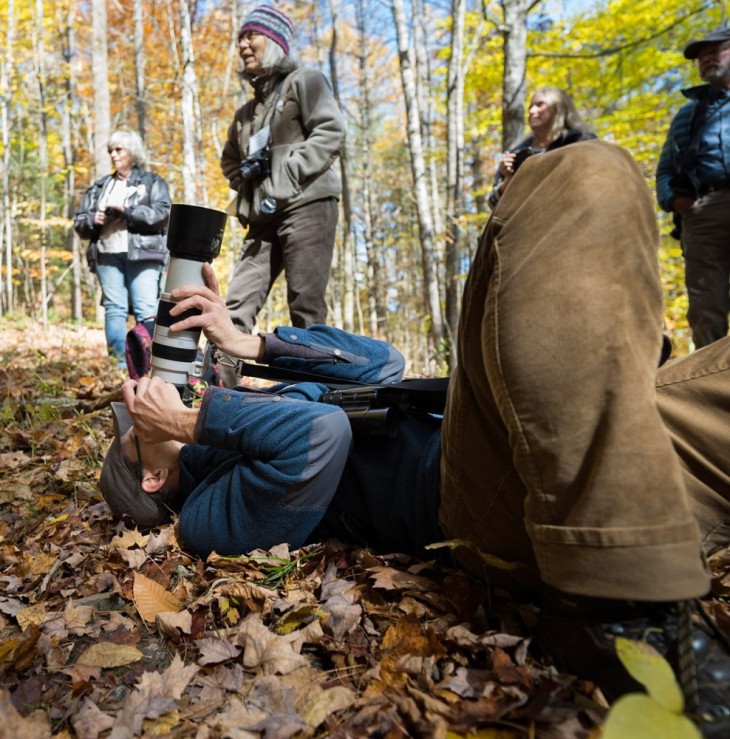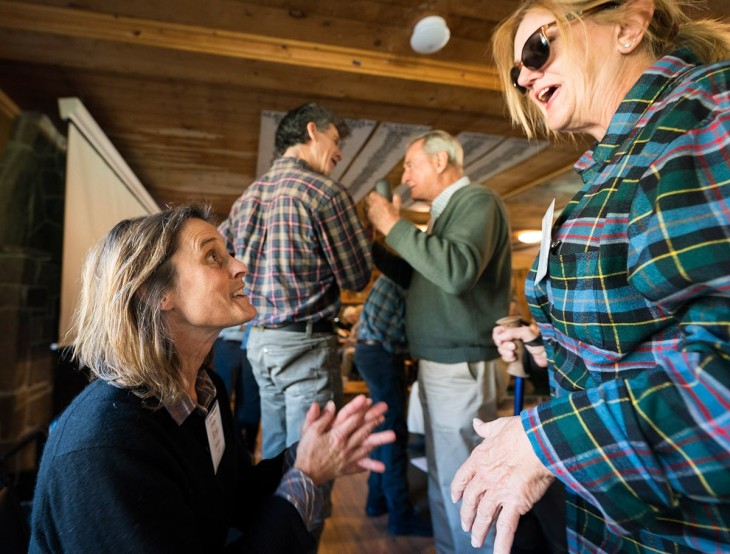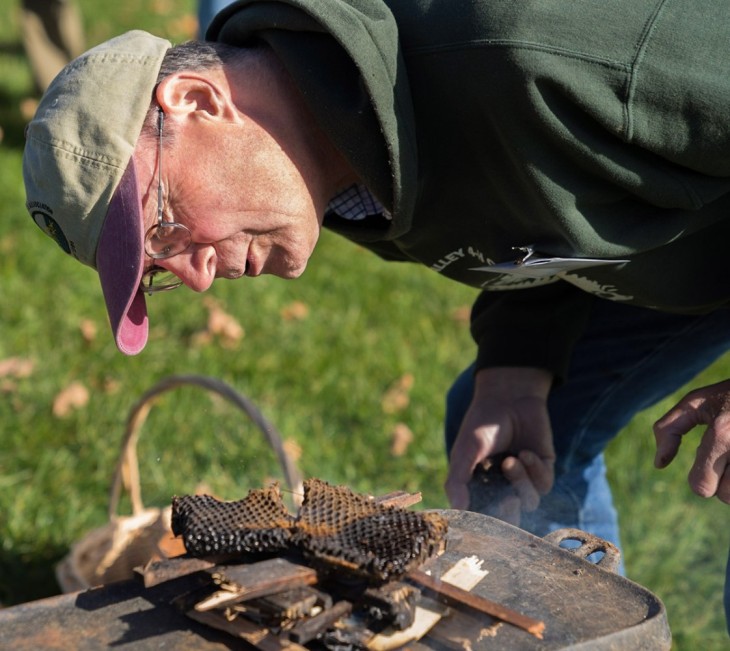Our annual Northern Woodlands Conference, held this past weekend, was a gathering of old friends and new, and an opportunity to meet with a fascinating mashup of great speakers. In lieu of the usual newsletter blog, we’ve put together a brief gallery of images from the event.
Meanwhile, back at the office, we’re bracing for our busiest season in the year, and completing work on the Winter 2019 issue. If you need to renew your subscription (and by doing so, help to support our nonprofit) please go to this link!
Laurel Symes, assistant director of the Bioacoustics Research Program at the Cornell Lab of Ornithology, wowed the audience with her presentation on how new techniques for monitoring and analyzing sound can support conservation science. Here she explains how wood boring beetles may use sound to avoid laying eggs too closely together.
Bernd Heinrich led a walk on one of Hulbert Outdoor Center’s trails – an experience one attendee compared to, “walking in a national park with John Muir.”
Author David Carroll gave a reading from several of his award-winning books, and also shared personal anecdotes from his decades of experience observing turtles and other creatures. He expressed the view that, while it is profoundly important that people be out in the woods, there should also be places where creatures live free of human contact.
Paleoecologist Wyatt Oswald described how to identify ancient pollen grains recovered from bog cores. This work informs research on forests’ response to past climate change.
Sean Beckett, staff naturalist at North Branch Nature Center and a professional photographer, shared photography techniques during an outside workshop.
On Saturday, there was a joint presentation by Jim Collins, David Dobbs, Erica Heilman, and Ben Silberfarb, describing their shared work on the Resilient Forest Series. This photo captures informal conversations that occurred after the presentation.
How do you attract bees in cool weather? Burn rancid honeycomb. Tom Seeley successfully demonstrated this technique. Using the bees’ flight path, participants discovered the location of a wild hive.


